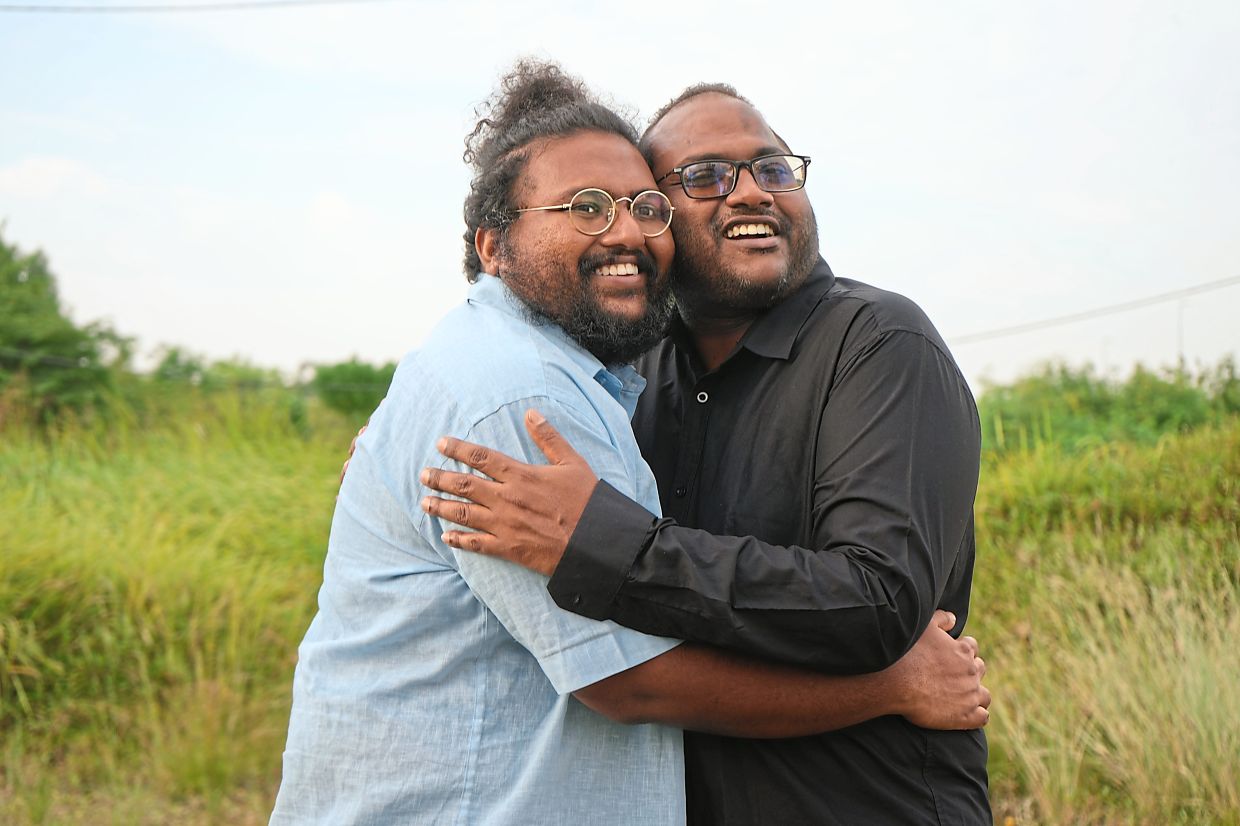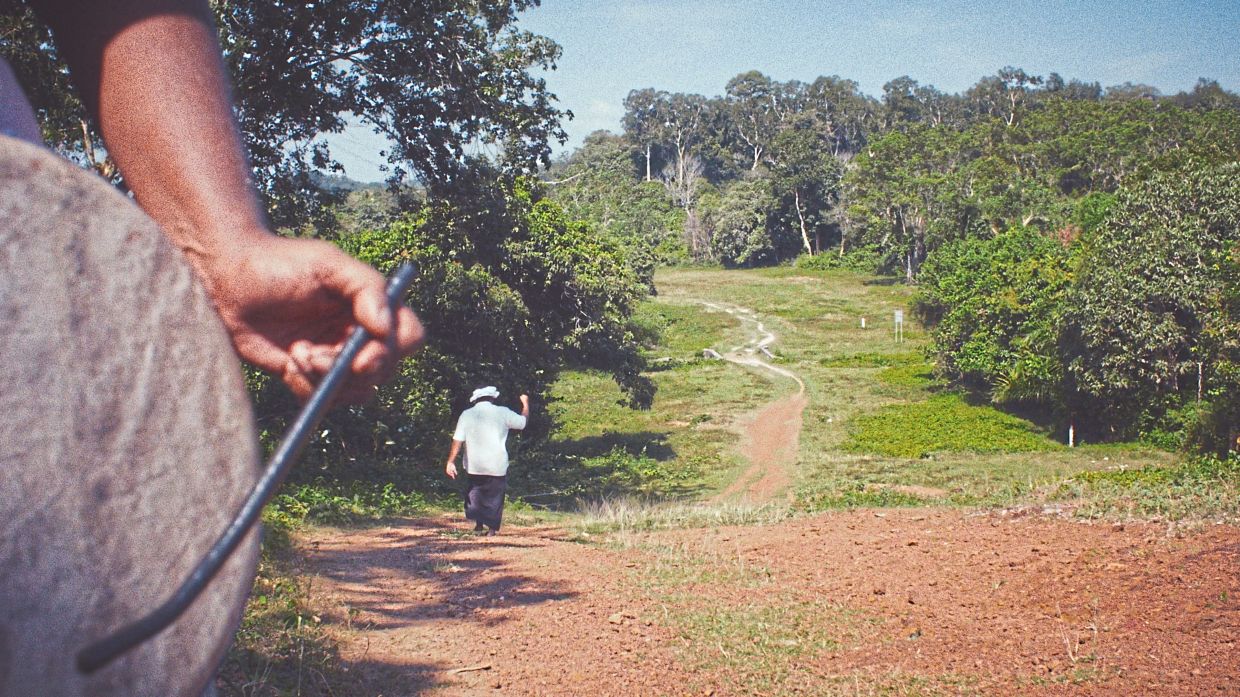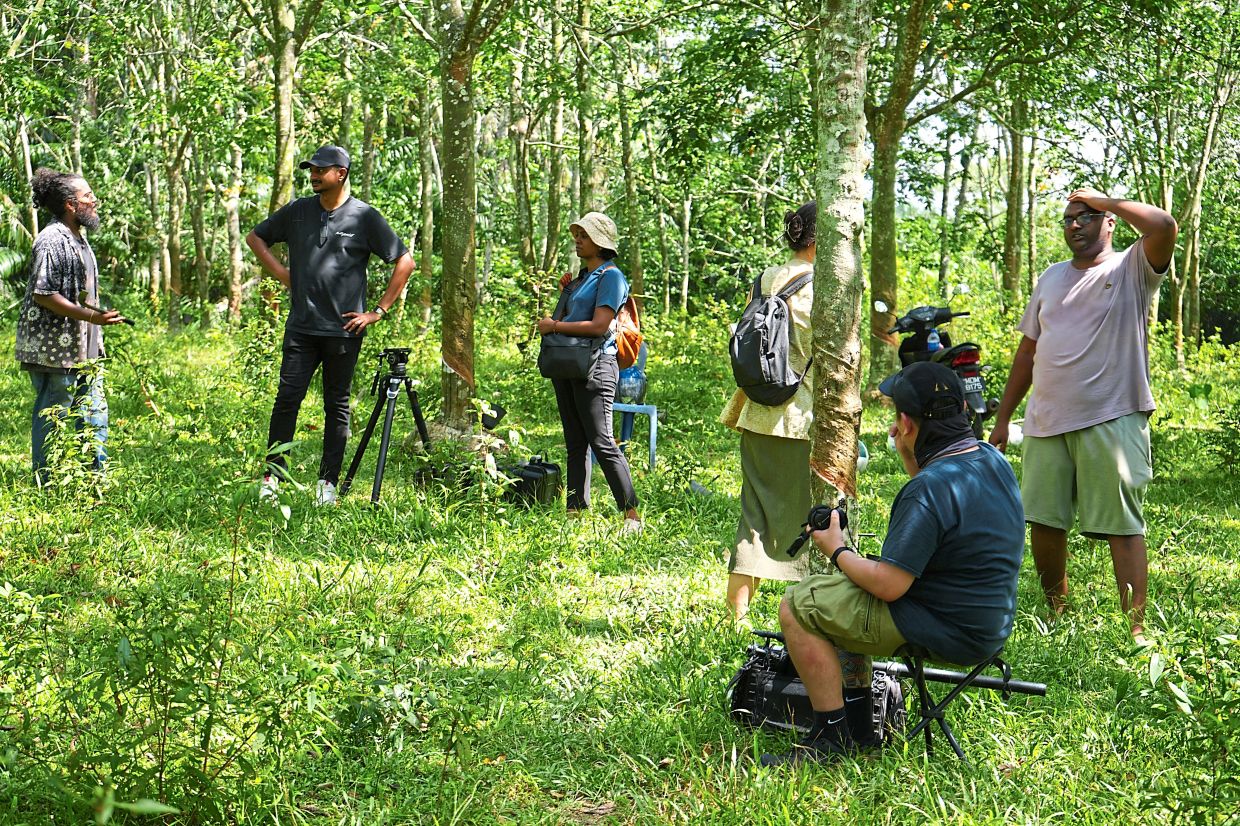September 4, 2025
KUALA LUMPUR – History lingers through Ilham Gallery’s The Plantation Plot exhibition in Kuala Lumpur, not only in paintings, installations and photographs, but also in song.
In one corner, a video installation titled Coolies’ Chorus recalls the voices of Tamil labourers once bound to the plantations in old Malaya. The melodies, bittersweet and plaintive, wash over visitors. Most may not understand the words, yet they remain transfixed, listening.
Kuala Lumpur-based filmmaker Gogularaajan Rajendran, better known as Gogu, is the artist behind Coolies’ Chorus. The video forms part of a wider project that has led him back to his roots.
These forgotten Tamil folk songs have left him just as transfixed as the audiences who encounter them, pulling him into the histories and emotions carried in their cadences.
“To tap rubber trees, we boarded an old ship. For 45 cents, they broke my back. For 35 cents, they bent my joints.”
It was this haunting verse, once sung by Indian estate workers in the early 20th century, that struck Gogu most deeply.
His own great-grandfather was among the thousands brought to Malaya as indentured labourers, enduring the long, unyielding days of plantation life under colonial rule.
Today, Gogu is retracing those footsteps through Araro Ariraro, a musical documentary by Om Sakthi Films that brings back the forgotten Tamil folk songs of Malaya’s plantations – songs once carried on the breath of workers, before time rendered them silent.
Coolies’ Chorus, now featured at Ilham Gallery’s The Plantation Plot exhibition in Kuala Lumpur, is one chapter of that journey.

PHOTO: COLLECTED/THE DAILY STAR
“My family comes from a plantation in Banting, Selangor, but I was born in the city. Even though I didn’t live that life myself, I’ve always felt connected to the estate,” said Gogu, 32, in a recent interview.
“When I started this project, it was as if my ancestors were speaking straight to me. There was no distance, no barrier – everything came together in that moment, and I knew this was my chance to tell their story,” he added.
The chorus rises
The project began in 2021 as a grassroots archival effort, with Gogu and his team, including his older brother Kumanavannan (as producer), interviewing more than 60 elders who had lived and worked in plantations during the 1960s and 1970s. Their stories revealed a vivid, often painful picture of estate life – its sweat, resilience, losses, and quiet joys.
“Where colonial archives dehumanise the workers only as labour, these plantation Tamil folk songs resurrect them as living beings, in body, and in spirit, as artists and archivists of their own history,” outlines the project’s notes.
Along the way, Gogu found one of the few surviving written records: Malaysian Folk Songs, a posthumous publication compiled by Professor Dr R. Dhandayutham (from Universiti Malaya) and released in Chennai, India. It contained over 500 plantation songs collected from workers, but the melodies were missing. These songs had once defined the lives of thousands, yet all that remained were lyrics without their music.

A scene from the documentary ‘Araro Ariraro’, featuring a location in Masjid Tanah in Melaka. PHOTO: COLLECTED/THE DAILY STAR
Araro Ariraro, a crowdfunding project, is a labour of love to restore these songs.
In 2023 and 2024, the team journeyed to Thanjavur, Tamil Nadu, to work with folk musicians and scholars at Tamil University. Drawing from centuries-old traditions, these musicians helped breathe melody once more into the lost plantation verses of Malaya.
“When I looked at the 500 songs in the book, I began to see their evolution,” said Gogu.
“The earliest ones spoke of India – the mountains, the rivers, the greatness of the homeland. They were sung by workers who were homesick, longing for a place they knew they’d never return to.
“Later, as families settled here, the songs shifted. They spoke of hard labour, of oppression, of life in the estates. Yet even in lullabies or love songs, you can still feel the pain.”
The songs mirrored every stage of estate life: lullabies for newborns, laments at gravesides, work chants for rubber tapping, and festival songs of fleeting joy. Some voiced union struggles in the rise of labour movements, while others carried the innocence of children’s games amid hardship.

A behind-the-scenes glimpse of the documentary, filmed on a Melaka estate. For the project, the team visited 15 estates across Peninsular Malaysia. PHOTO: COLLECTED/THE DAILY STAR
“Of course they faced terrible oppression, but there was also life – festivals, children playing, laughter,” said Gogu.
“Even their songs about rubber trees showed a bond with the land. It’s important to honour the joy alongside the suffering, because both existed side by side.”
The documentary charts this journey from research and travels to India, to reviving the songs, and finally to Banting – where Gogu and his family return to the Brooklands plantation to sing these ancestral verses back into the soil that once bore them.
“This isn’t just about recovering old songs. It’s about asking: what happens when we sing them again – here, now, on the same land?” he said poignantly.
Going beyond the screen
The journey of Araro Ariraro goes beyond film, with public events and exhibitions bringing plantation songs to life.
At the GMBB creative mall in Kuala Lumpur, a mini-exhibition features lyrics, photos, archival material, and sensory installations that immerse visitors in estate life. It runs until Malaysia Day.
At Ilham Gallery, Coolies’ Chorus – an installation linked to the project – is one of the highlights of The Plantation Plot exhibition, which explores the historical and contemporary legacies of plantation systems. The show runs until Sept 21.
On Sept 20, Ilham will also host a special performance by folk singers from India, who will revive the very melodies once thought lost.
The Malaysia Day songbook could use new entries, especially as a younger generation seeks to better understand their own communities. For Gogu, the project goes beyond historical preservation – it is about healing and identity.
By reclaiming these voices, the documentary reframes Malaysia’s history to include those at the margins. It honours estate workers not just as labourers, but as people who created culture, resisted through song, and made this land their home.
“There’s still reluctance to face this history because of the trauma. But our generation has the distance to look at it – and to heal it. This film is part of that healing. These songs show our ancestors didn’t just follow orders quietly; they resisted, endured, and found joy. That too is part of the Malaysian story,” said Gogu.
As the film project heads toward its release in February 2026, Gogu hopes audiences will see it as more than a documentary – rather, a musical restoration of memory and dignity.
“Somewhere in a century of harsh plantation history, my ancestors learned to love this strange land. In the estates, the unfamiliar became familiar, the foreign became home. Without understanding this part of history, I could never fully understand myself or my place in Malaysia,” concluded Gogu.

